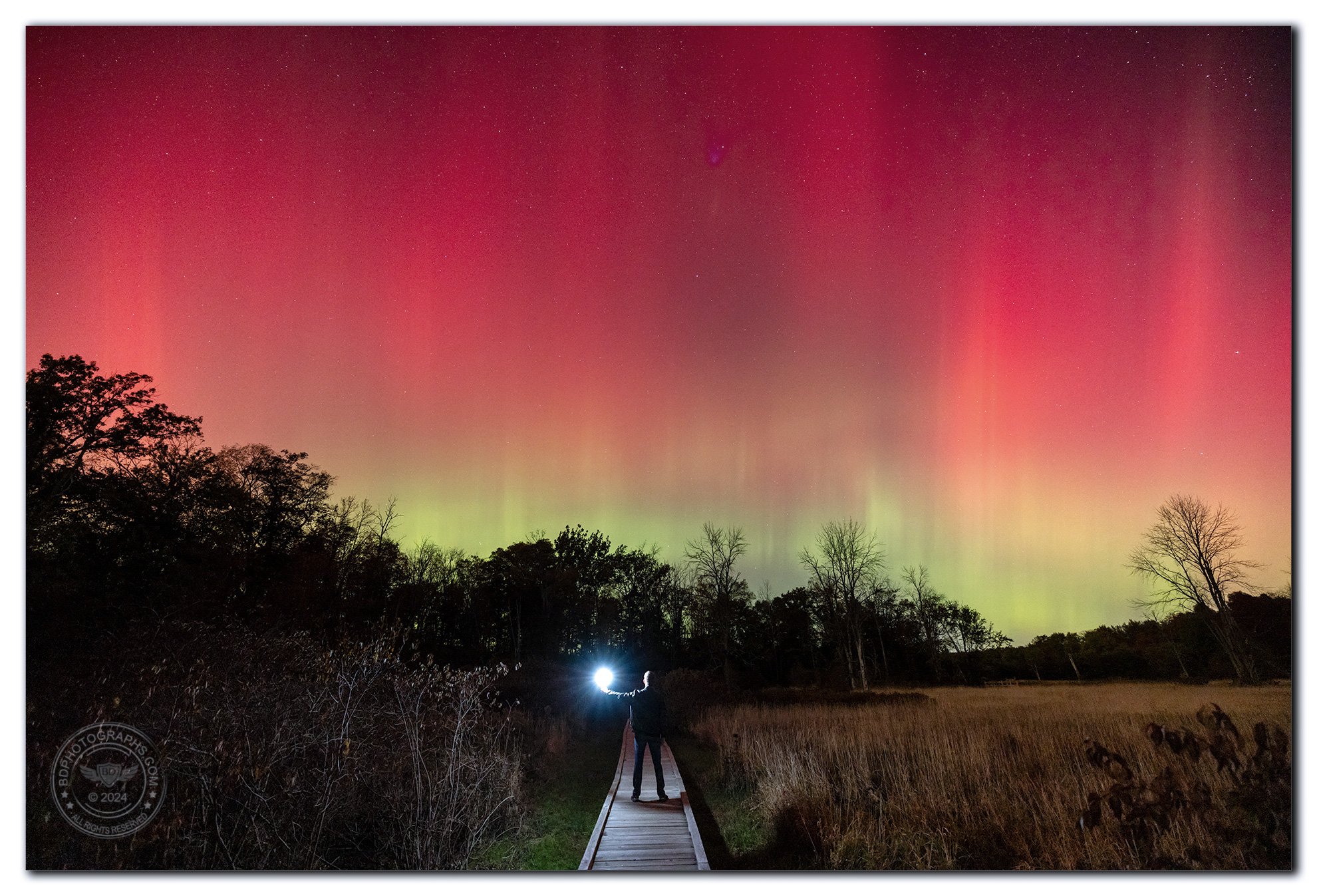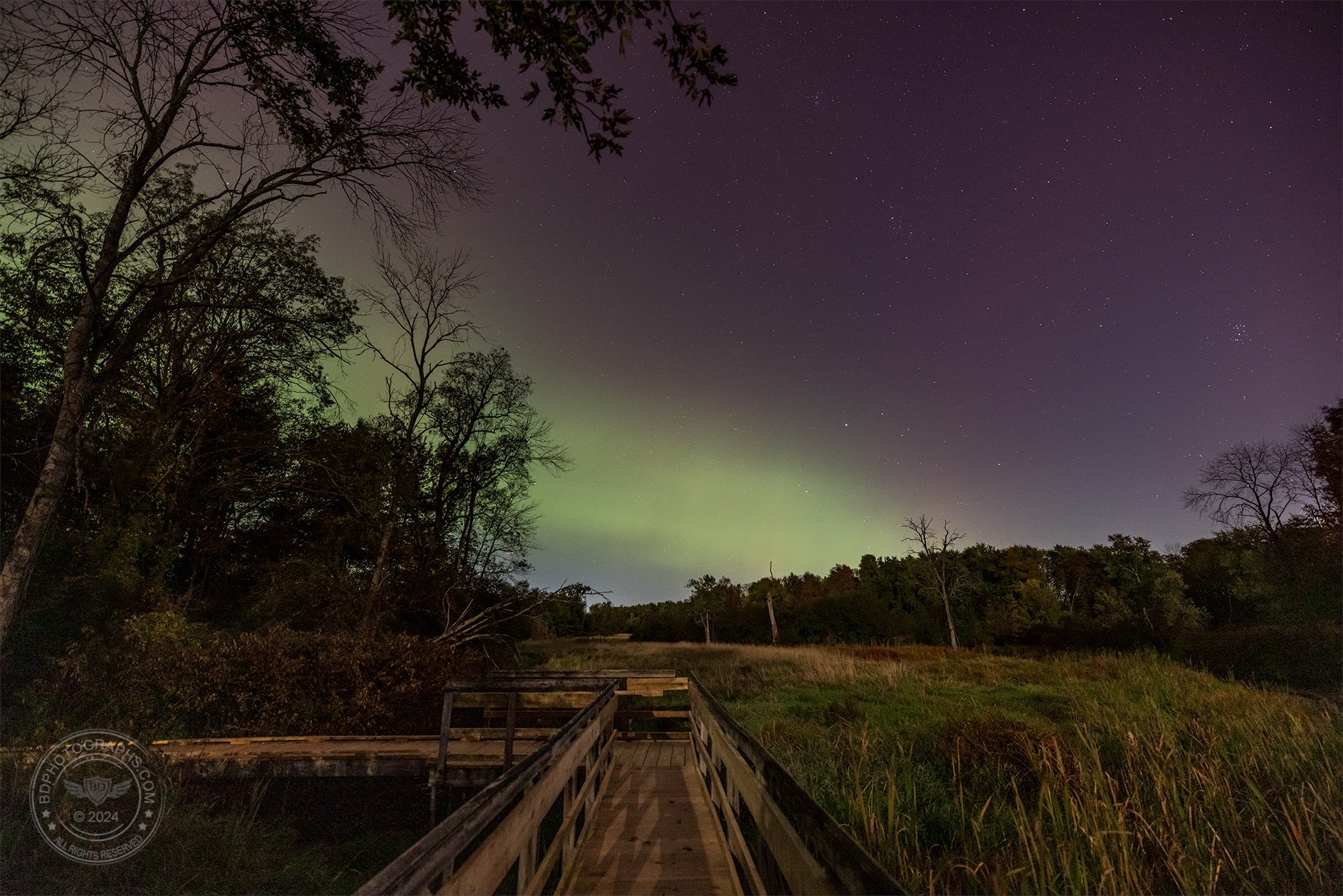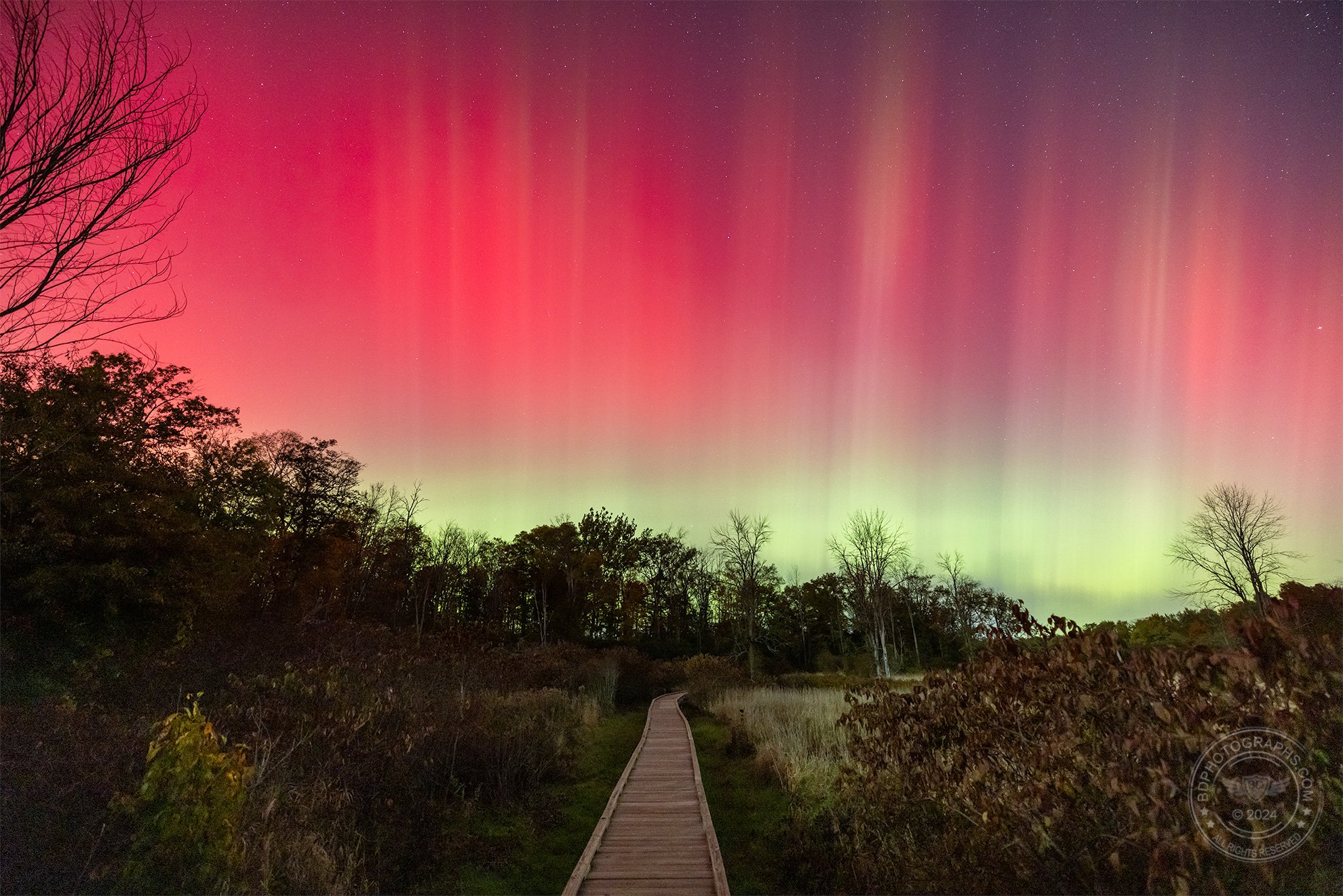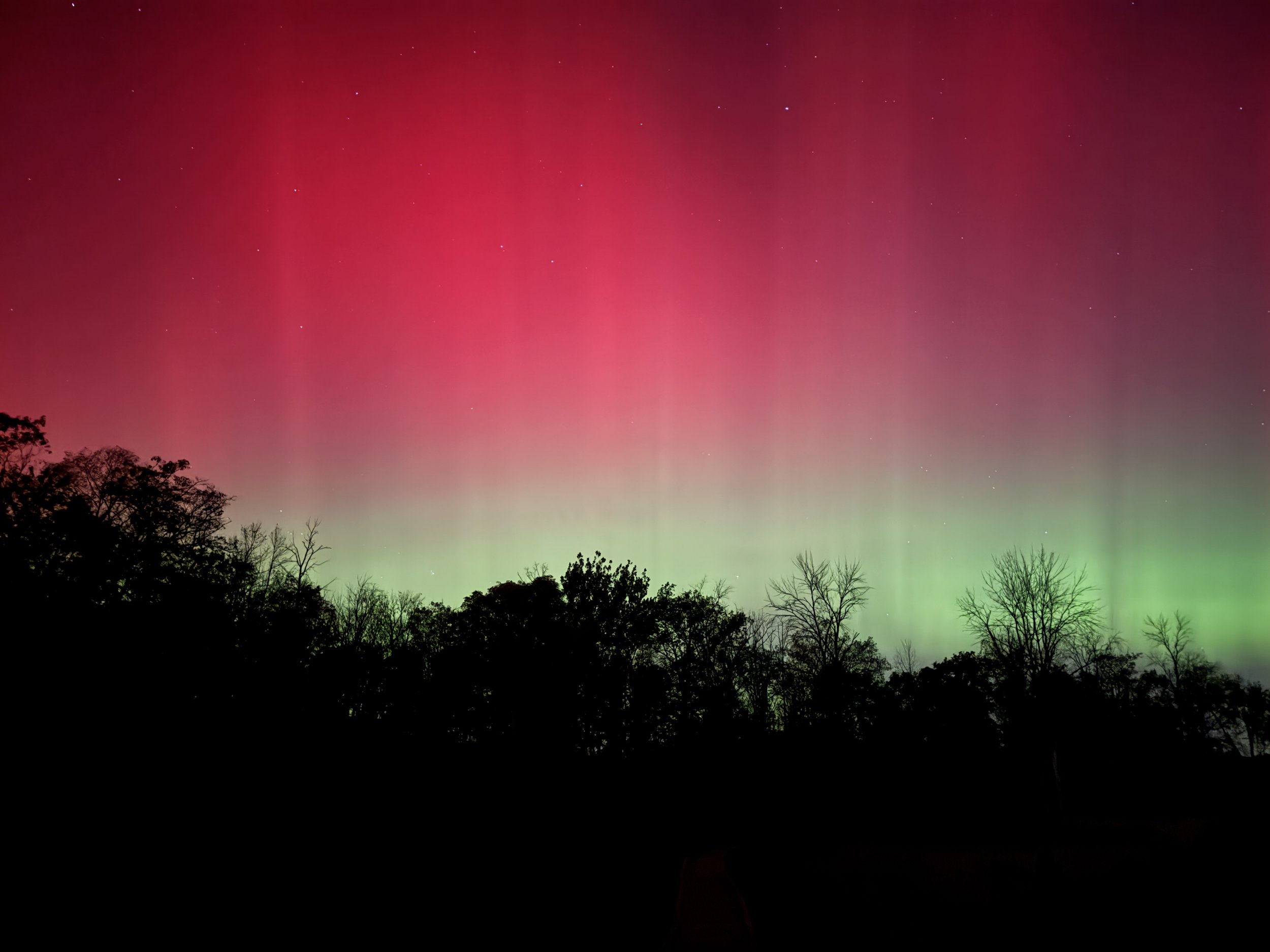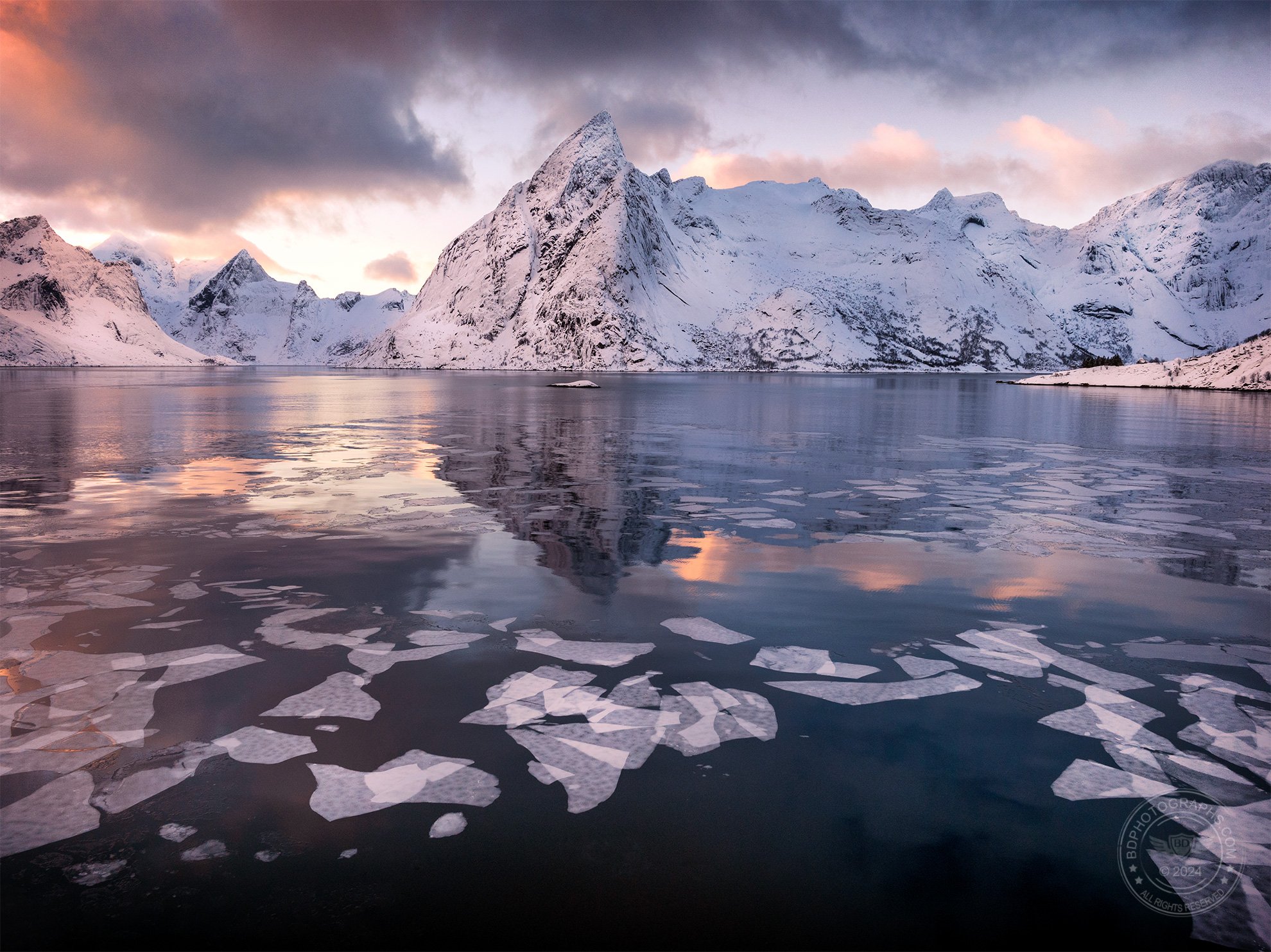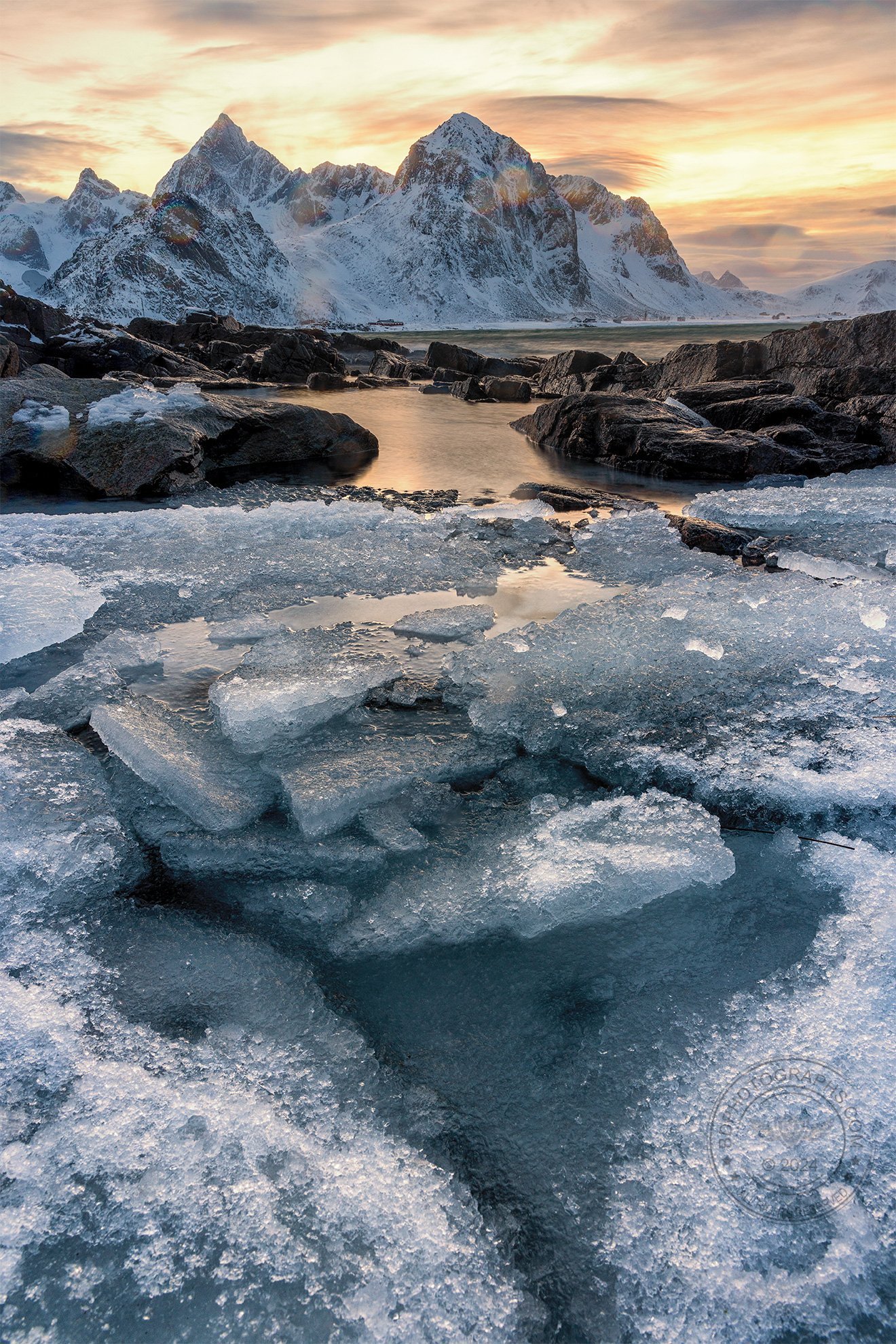On October 10, 2024, as predictions of a strong geomagnetic storm played out, sightings of the northern lights (aka aurora borealis) were reported throughout continental Europe in places that do not normally witness this amazing phenomenon. It became apparent that we were in for a treat in the US too.
Five months earlier an unusually strong solar storm dazzled much of the temperate and even tropical latitudes with amazing auroras — in the US, the northern lights could be seen as far south as Florida! Unfortunately, while that spectacle unfolded, I was in Utah under overcast skies and unable to witness the magic. Earlier in the year I photographed the aurora over snow-covered fjords in Norway, so I was especially excited, and then disappointed, at the missed opportunity much closer to home.
I photographed this “astro-selfie” in New Jersey under an incredible aurora borealis
As the October solar storm developed, I made preparations to shoot after sunset. The weather forecast called for clear skies — an auspicious start to the evening. In the New York City area it is difficult to find truly dark skies: the best options are usually the beaches of Long Island or the Jersey Shore, but those face south and east …
So I traveled 45 miles northwest of Manhattan to a section of the Appalachian Trail that features a raised boardwalk over marshy grasslands. The trail snakes around a valley in the New York-New Jersey Highlands region, near the border of the two states. I chose this area for its meandering path and largely open field, providing multiple viewpoints and alignments in different directions.
I arrived at about 9:00 PM to a crisp 45ºF. Here is how the aurora developed that evening:
At first just a hint of green to the northwest. Truthfully, I would have been happy with this, but there was more to come…
More color looking northeast
Green and purple later on. The setting quarter moon behind me was so bright it cast shadows across the boardwalk.
Showtime! A substorm flared up shortly after 10 PM. Moments after I captured this image, I set up for the “astro-selfie” at the beginning of this blog.
Some have asked me what the aurora looks like to the naked eye. Surely it cannot be as brilliant and saturated as these images, right? And the answer is yes, that is true of most celestial bodies and cosmic events, except perhaps for the moon. Nonetheless the aurora is very much visible to the naked eye and the colors and textures readily apparent. There’s no way we can see light the same way as a long camera exposure, but that doesn’t diminish the incredible experience of witnessing the northern lights.
Approximation of what the human eye sees (left) versus the camera (right)
I shot this event with my Canon EOS R5 camera body stacked with a wide-angle RF 15-35mm F/2.8L lens. For a vast night sky, a wide field of view is the preferred choice, so most images were shot at the widest 15mm.
You don’t need an expensive camera to photograph the aurora, however. Many smartphones released in the last few years are packed with impressive optics. This image was photographed with my iPhone 15 Pro.
iPhone exposure of the aurora in northern New Jersey. I also caught the aurora with my phone in Norway.
Fingers crossed for another aurora event sometime soon. And for clear skies to see it.
